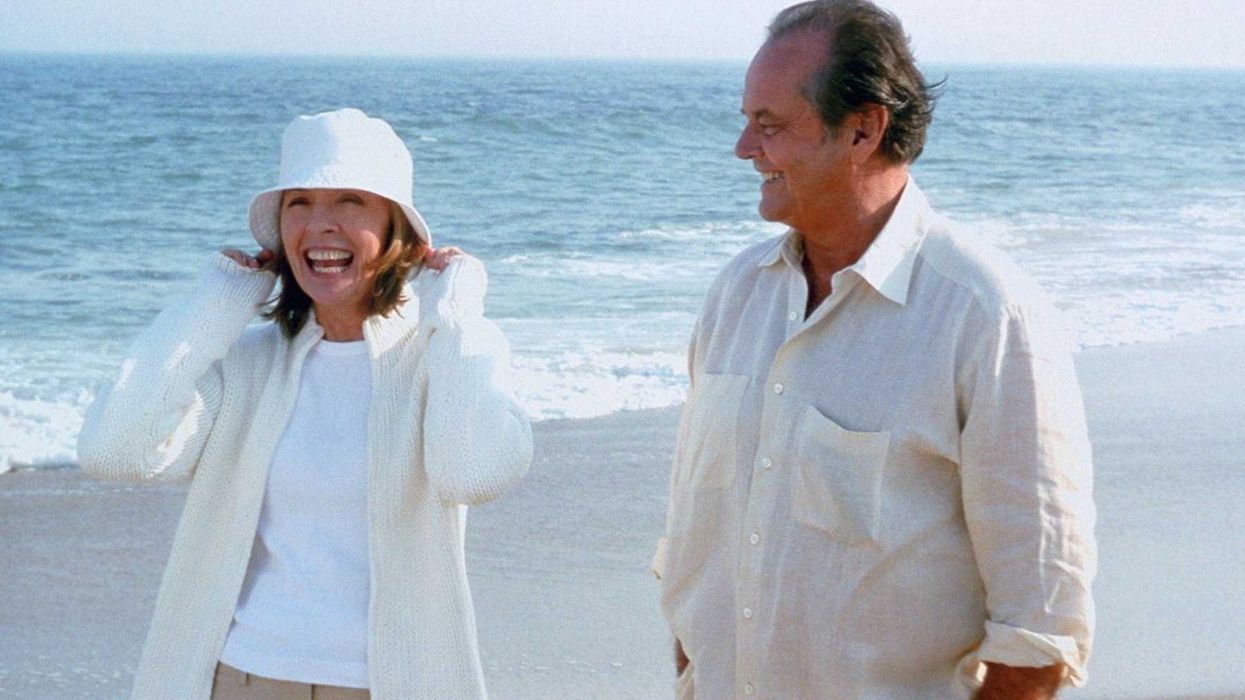Nancy Meyers Reveals the Secrets of Her Successful Writing and Directing Process
Her films are funny. They’re romantic. They’re endlessly re-watchable. They’re box-office hits. What makes them work so well?

At an event organized by the Writer’s Guild of America West and Women in Entertainment, Nancy Meyers -- interviewed by filmmaker (and daughter) Hallie Meyers-Shyer -- shared her secrets behind her illustrious career.
What millennial woman -- or man, for that matter -- didn’t learn the handshake from The Parent Trap, then grow up to yearn for Diane Keaton’s turtleneck sweaters in Something’s Gotta Give, and Meryl Streep’s linen outfits in It’s Complicated?
Wrapped in idyllic scenery, her films seem as effortless as her heroine’s outfits on the surface, but underneath, they are a testament that time spent on structure, pace, and a quest for truth results in emotionally resonate and laugh-out-loud funny films. We wrote about some of her insights here. For a deep dive into what makes her projects really work, read on.
On Writing:
"Outline, Outline, Outline"
For each film she writes, Nancy creates an extensive outline. They span 50 to 80 pages -- almost the length of a finished script. Her outlines are her writing process. They are incredibly detailed. She includes lines of dialogue, scene descriptions, jokes, and staging. She uses the outline process to determine the order of scenes. She also uses the outline to get a sense of pacing, structure, and act breaks. She writes notes to herself in the outline, indicating where the act break should be, which scenes might have potential to be combined.
Pay Attention to Pace and Gut
Nancy Meyers' films contain both laugh-out-loud moments and deep emotional ones. How do you strike this delicate balance? How do you know what each scene needs?
Nancy has two guiding principals when she’s writing. She has two signs on her desk when she’s writing: “Pace” and “gut”.
Pacing is the rhythm of the scenes. Is it too fast, or too slow? Are the scenes building to the act break? Do the scenes feel balanced?
Gut is all about emotion. Listen to your gut when you’re writing. It is a reminder to get to the truth of the scene. Is it emotionally honest? As a writer, she is always pushing for the emotional core of the scene to ring true.
Make It Funny - and Don’t Be Afraid To Cry
When asked how she approaches bringing the funny, Nancy remarked, “Have funny things happen as often as they can.”
While this sounds relatively straightforward, it is solid advice. As a writer, you have to establish so much -- character, exposition, plot -- in each scene, but, if you’re writing a comedy, you must think about adding a comedic element. More than one! Layer funny things on top of each other.
Although her films are full of humor, Nancy reflected, “I cry sometimes when I’m writing. And when I read it, of course.” Staying connected to the emotional journey of your characters is important. Just because something makes you laugh, doesn’t mean it also can’t make you cry.
Be Tough On Yourself
Hallie, writer-director of Home Again, commented that her mother gives incredible notes. And not just to other writers; Meyers is hard on her own work, and it makes it stronger. She recalls the first draft of Something’s Gotta Give being 250 pages. She “read it, burst into tears, and wanted to throw it out.” But, she went to bed, woke up the next day and went at it with a red pen.
Don’t Be Boring
When you read your own work, Nancy says, “you are the audience.”
If you’re bored, the audience will be bored. You want to read it as if you are watching the movie. It goes back to pacing -- keep things moving, keep things interesting, layer on the conflict. Nancy remarked that a great way to level up your writing is to have “more than one thing happening at once.” You never want a scene to be about one thing. Adding different elements keep things textured, layered, and entertaining.
Write Where You Want to Film
An unexpected piece of key advice is to write where you want to film. This is particularly true for writers who also direct and produce. Nancy recalls, “When I wrote my first movie, I wrote “exterior swamp - night,” then I was there.” The audience burst into laughter. She continued, “Note to self: write, ‘Ext. Paris.” A word to the wise.
On Directing:
Don’t Be Thrown Off By Curveballs
Changes occur constantly in filmmaking. Nancy knows what it is like to adjust to unexpected challenges, like the one she encountered on the set of It’s Complicated.
The film is set in gorgeous Santa Barbara, California, but they needed to film in New York for logistical reasons. So, they built Meryl Streep’s house entirely on a soundstage in Brooklyn. Instead of taking this as a setback, Nancy used the opportunity to create the perfect set. She thought about every detail, drawing from the story to create a set that was motivated by character and backstory. For example, the house has an open floorplan, because Meryl Streep’s character is divorced, and would have had three teenagers at the same time. Three teenagers means having a lot of their teenage friends hanging around, and so she would have wanted room for them to gather. She mused that her character would have knocked down the walls after her divorce.
Although filming New York for California was a curveball, Nancy observed the home was “more authentic” as a result.
Find Time for Rehearsal
Nancy emphasized she always asks for rehearsal time, but due to schedules, she rarely gets it. She shared a director’s secret -- using wardrobe fittings as a way to get to know character, and establish shorthand with actors.
Because there’s rarely time for proper rehearsal, wardrobe fittings become time to talk about character. She remembers one wardrobe fitting for Something’s Gotta Give with Jack Nicholson that lasted six hours, in which he tried on one pair of pants. He was using the time to get in character. She recalls, “When you're in the room with the director, and the rack of clothes, there’s a lot of good questions that come up.”
Preparing For Set
A key element to any director’s process is prep. Nancy’s advice is to read the scenes you’re going to shoot the week ahead on the weekend. Take time to highlight things in the script that you do not want to forget. When you have so many things to focus on, having your highlighted script as a guide can be your roadmap.
Collaborating With Departments
Nancy approaches collaborating with different department heads, such as the production designer and composer, as integral pieces to telling the story. With the homes of her leading ladies being iconically grand, it is no wonder she takes such care to motivate her characters surroundings from the script. When making Something’s Gotta Give, Nancy recollects drawing the floorplan. These decisions play into the story. Nancy emphasized, “the score is the biggest impact anybody is gonna have on your movie.” Describing working with Hans Zimmer on The Holiday, she recalls a spotting session in which Hans asked her to direct him. He wanted to know how the characters are feeling and when.
Director’s Job On Set
While a director has a lot of responsibilities to juggle while on set, Nancy remarked, “My real job is reading the scenes, and making a million notes. What’s most important? Why is this happening?” The director needs to stay focused on the core of the story. "It’s a circus and you’re the lion tamer.” The director’s job is to know what the moment is about. Actors want to succeed. It is the director’s job to help them.
Treat yourself to a Nancy Meyers marathon, and get to work on your projects!
Need further motivation? Check out these 10 Tips for writing a successful Rom Com.













